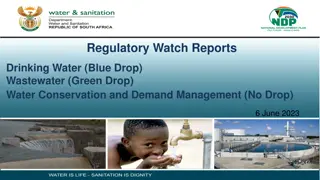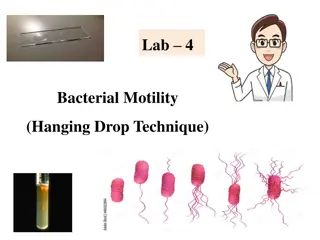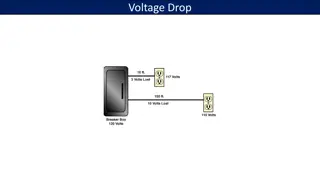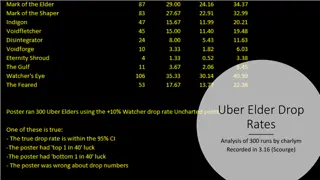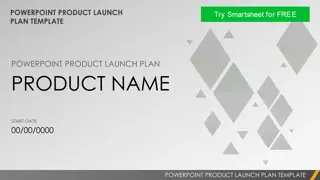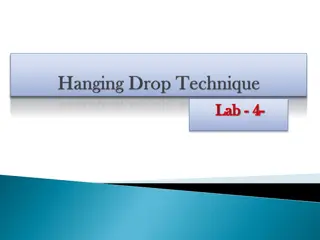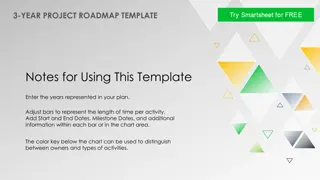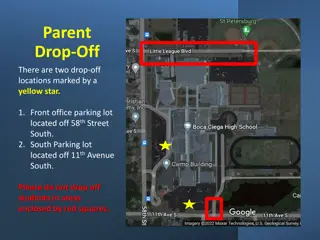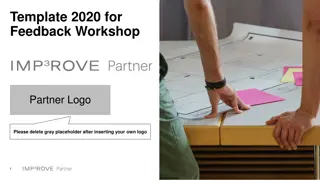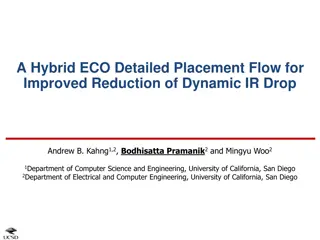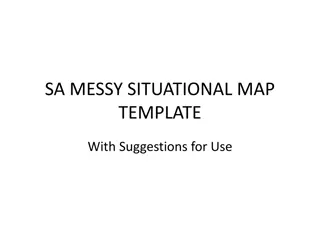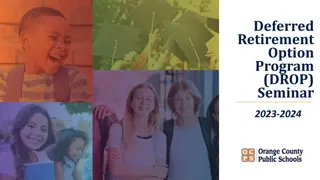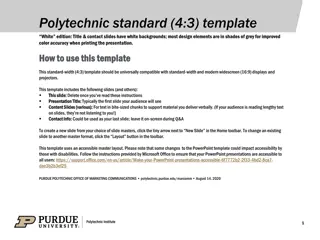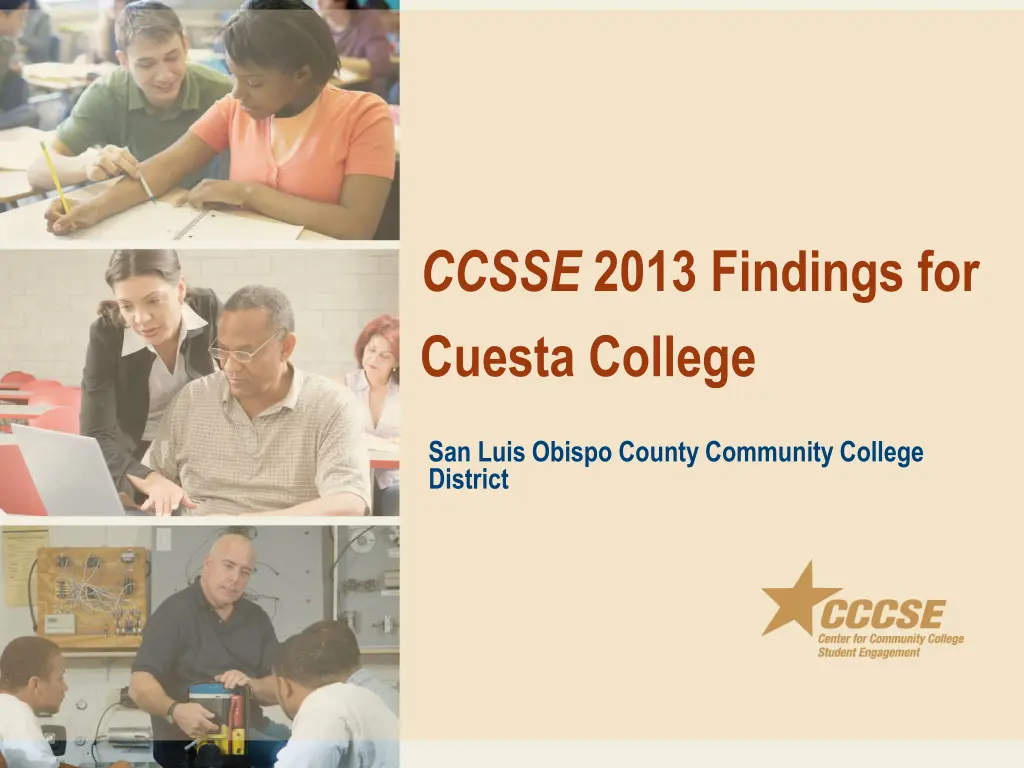
Understanding Student Engagement at Cuesta College: CCSSE 2013 Findings
Explore the CCSSE 2013 findings for Cuesta College in San Luis Obispo County Community College District. Learn about student engagement, survey respondents, excluded respondents, and the importance of CCSSE as a tool for community colleges to enhance educational practices and institutional quality.
Download Presentation

Please find below an Image/Link to download the presentation.
The content on the website is provided AS IS for your information and personal use only. It may not be sold, licensed, or shared on other websites without obtaining consent from the author. If you encounter any issues during the download, it is possible that the publisher has removed the file from their server.
You are allowed to download the files provided on this website for personal or commercial use, subject to the condition that they are used lawfully. All files are the property of their respective owners.
The content on the website is provided AS IS for your information and personal use only. It may not be sold, licensed, or shared on other websites without obtaining consent from the author.
E N D
Presentation Transcript
CCSSE 2013 Findings for Cuesta College San Luis Obispo County Community College District
Presentation Overview CCSSE Overview Student Respondent Profile CCSSE Benchmarks Community College Students and Stories Strategies to Promote Learning that Matters 2
What is Student Engagement? the amount of time and energy students invest in meaningful educational practices the institutional practices and student behaviors that are highly correlated with student learning and retention 4
The Community College Survey of Student Engagement (CCSSE) CCSSE is designed to capture student engagement as a measure of institutional quality. 5
CCSSE: A Tool for Community Colleges As a tool for improvement, CCSSE helps us Assess quality in community college education Identify and learn from good educational practice Identify areas in which we can improve Basic principles Provides reliable data on issues that matter Reports data publicly Is committed to using data for improvement 6
Student Respondent Profile at Cuesta College San Luis Obispo County Community College District
Survey Respondents 680 adjusted survey count 68% overall percent of target rate Source: 2013 CCSSE data 8
Excluded Respondents The following respondents were excluded from reporting: Respondents not indicating enrollment status Respondents marking invalid data selections Respondents under the age of 18 Respondents indicating previous survey submission Oversample respondents were also excluded. 9
Student Respondent Profile: Enrollment Status 80% 71% 72% 70% 60% 50% 40% 29% 28% 30% 20% 10% 0% Less than Full-Time Cuesta College Full-Time CCSSE 2013 Cohort Source: 2013 CCSSE data 10
Student Respondent Profile: Age 90% 78% 80% 70% 63% 60% 50% 37% 40% 30% 22% 20% 10% 0% 18-24 Cuesta College 25+ CCSSE 2013 Cohort Source: 2013 CCSSE data 11
Student Respondent Profile: Sex 70% 62% 60% 56% 50% 42% 37% 40% 30% 20% 10% 0% Male Cuesta College Female CCSSE 2013 Cohort Source: 2013 CCSSE data 12
Student Respondent Profile: Racial Identification 66% White/Non-Hispanic 58% 14% Hispanic 12% 5% Black or African American 11% Asian, Asian American, or Pacific Islander 5% 4% 1% American Indian or Native American 2% 6% Other 4% 0% 10% 20% 30% 40% 50% 60% 70% Cuesta College CCSSE 2013 Cohort Source: 2013 CCSSE data 13
Student Respondent Profile: First-Generation Status First-Generation Not First-Generation 10% 10% Source: 2013 CCSSE data 14
Student Respondent Profile: Educational Attainment 3%1% High school diploma or GED 8% Some college (fewer than 30 credit hours of college-level work) 8% Associate degree Bachelor's degree 80% Advanced Degree Source: 2013 CCSSE data 15
Student Respondent Profile: Goals 18.9 Complete a certificate program 29 41.1 Obtain an associate degree 35 66 Transfer to a 4-year college or university 15.2 33.6 Obtain or update job-related skills 33.4 36.8 Self-improvement/personal enjoyment 40.5 17.3 Change careers 15.9 0 10 20 30 40 50 60 70 Primary Goal Secondary Goal Source: 2013 CCSSE data 16
Student Respondent Profile: Total Credit Hours Earned None 10.9 16 1-14 credits 15-29 credits 12.6 26.6 30-44 credits 45-60 credits 14.4 Over 60 credits 19.5 Source: 2013 CCSSE data 17
Student Respondent Profile: External Commitments 25 More than 30 hours 9.4 22 21-30 hours 2.2 13.3 11-20 hours 3.7 6.7 6-10 hours 7.4 6.2 1-5 hours 13 26.9 None 64.2 0 10 20 30 40 50 60 70 Working for Pay Caring for Dependents Source: 2013 CCSSE data 18
Student Respondent Profile: College-Sponsored Activities 1.1 1.8 1.9 2.8 None 1-5 hours 10.6 6-10 hours 11-20 hours 21-30 hours 81.8 More than 30 hours Source: 2013 CCSSE data 19
CCSSE Benchmarks for Effective Educational Practice The five CCSSE benchmarks are Active and Collaborative Learning Student Effort Academic Challenge Student-Faculty Interaction Support for Learners 21
Active and Collaborative Learning This is an opportunity to customize one or more of your slides using the following Active and Collaborative Learning benchmark items: During the current school year, how often have you: Asked questions in class or contributed to class discussions (#4a) Made a class presentation (#4b) Worked with other students on projects during class (#4f) Worked with classmates outside of class to prepare class assignments (#4g) Tutored or taught other students (paid or voluntary) (#4h) Participated in a community-based project as a part of a regular course (#4i) Discussed ideas from your readings or classes with others outside of class (students, family members, co-workers, etc.) (#4r) Source: 2013 CCSSE data 22
Student Effort This is an opportunity to customize one or more of your slides using the following Student Effort benchmark items: During the current school year, how often have you: Prepared two or more drafts of a paper or assignment before turning it in (#4c) Worked on a paper or project that required integrating ideas or information from various sources (#4d) Come to class without completing readings or assignments (#4e) Used peer or other tutoring services (#13d) Used skill labs (#13e) Used a computer lab (#13h) During the current school year: How many books did you read on your own (not assigned) for personal enjoyment or academic enrichment (#6b) How many hours did you spend in a typical week preparing for class (studying, reading, writing, rehearsing, or other activities related to your program) (#10a) Source: 2013 CCSSE data 23
Academic Challenge This is an opportunity to customize one or more of your slides using the following Academic Challenge benchmark items: During the current school year, how often have you: Worked harder than you thought you could to meet an instructor s standards or expectations (#4p) How much does your coursework at this college emphasize: Analyzing the basic elements of an idea, experience, or theory (#5b) Synthesizing and organizing ideas, information, or experiences in new ways (#5c) Making judgments about the value or soundness of information, arguments, or methods (#5d) Applying theories or concepts to practical problems or in new situations (#5e) Using information you have read or heard to perform a new skill (#5f) During the current school year: How many assigned textbooks, manuals, books, or book-length packs of course readings did you read (#6a) How many papers or reports of any length did you write (#6c) To what extent have your examinations challenged you to do your best work (#7) How much does this college emphasize: Encouraging you to spend significant amounts of time studying (#9a) Source: 2013 CCSSE data 24
Student-Faculty Interaction This is an opportunity to customize one or more of your slides using the following Student-Faculty Interaction benchmark items: During the current school year, how often have you: Used e-mail to communicate with an instructor (#4k) Discussed grades or assignments with an instructor (#4l) Talked about career plans with an instructor or advisor (#4m) Discussed ideas from your readings or classes with instructors outside of class (#4n) Received prompt feedback (written or oral) from instructors on your performance (#4o) Worked with instructors on activities other than coursework (#4q) Source: 2013 CCSSE data 25
Support for Learners This is an opportunity to customize one or more of your slides using the following Support for Learners benchmark items: How much does this college emphasize: Providing the support you need to help you succeed at this college (#9b) Encouraging contact among students from different economic, social, and racial or ethnic backgrounds (#9c) Helping you cope with your nonacademic responsibilities (work, family, etc.) (#9d) Providing the support you need to thrive socially (#9e) Providing the financial support you need to afford your education (#9f) During the current school year, how often have you: Used academic advising/planning services (#13a) Used career counseling services (#13b) Source: 2013 CCSSE data 26
CCSSE Benchmarks for Effective Educational Practice CCSSE Benchmark Scores for Cuesta College compared to 2013 CCSSE Cohort 52 51 50 49 48 47 51.3 50.4 50 50 50 50 50 46 45 47 46.9 44 45.4 43 42 Active and Collaborative Learning Student Effort Academic Challenge Student-Faculty Interaction Support for Learners Cuesta College Comparison Group Source: 2013 CCSSE data 27
Student Persistence Barriers to Returning to College How likely is it that the following issues would cause you to withdraw from class or from this college? Working full-time 19.2 Caring for dependents 8.5 Academically unprepared 7.4 Lack of finances 26.2 0 5 10 15 20 25 30 Source: 2013 CCSSE data 28
Closing Remarks and Questions
Questions? 31

